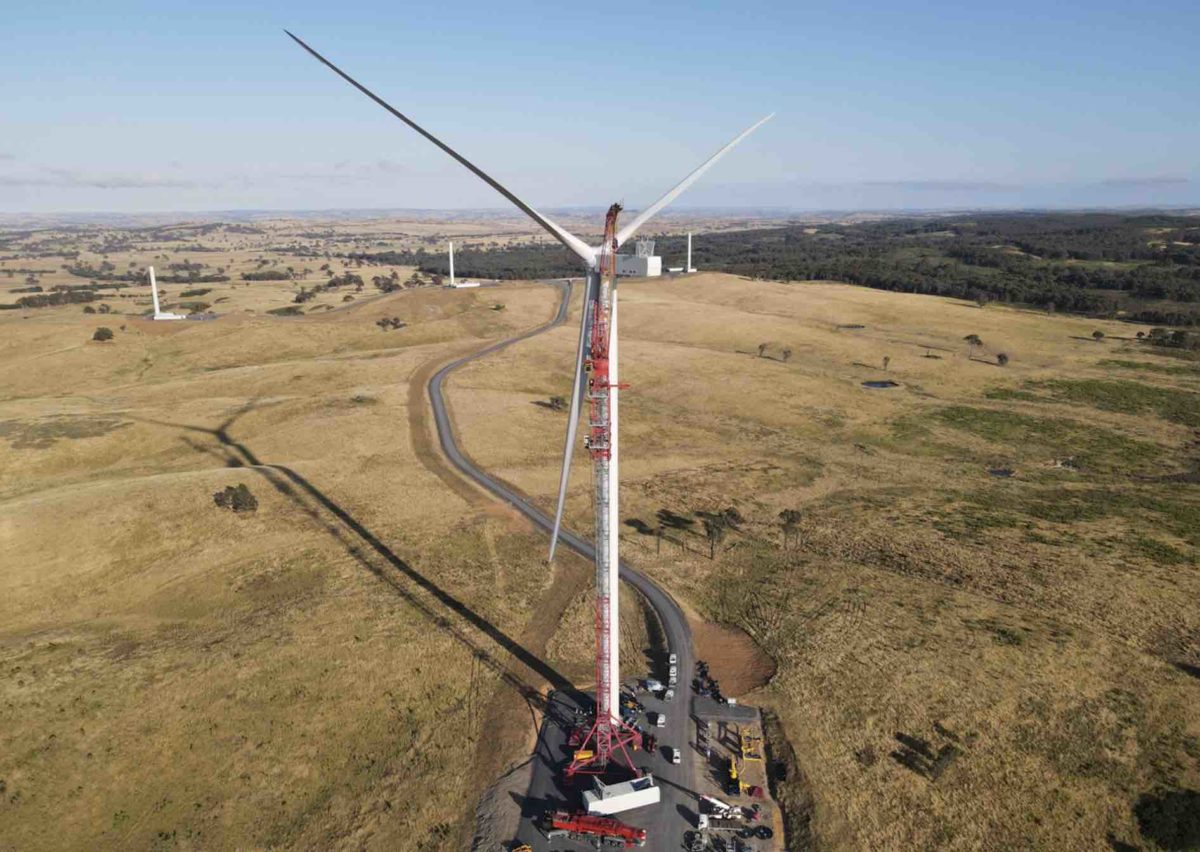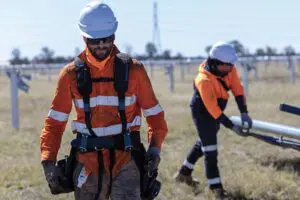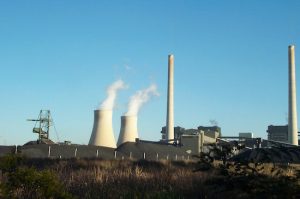Controversial wind energy development guidelines being proposed by the New South Wales government would have prevented the state’s largest wind farm from being built, new analysis has found, prompting a new plea from industry to rethink the rule changes.
The study from the Smart Energy Council analysed the potential impact of the Draft Wind Energy Guideline on the massive 400MW Rye Park Wind Farm, which is nearing completion by Tilt Renewables north of Yass in southern NSW.
The analysis finds that the project – half of the output of which is contracted to AGL Energy, the other half to Newcrest Mining – would have suffered significant increases in time and costs to comply with the visual assessment criteria of the proposed new development guidelines.
It would also have been cut from 66 turbines to as few as six, due to the theoretical impact of non-existent “hypothetical houses” the new rules propose that developments should account for.
The SEC says the proposed changes to guidelines for visual assessments – expensive photomontages of the landscape with wind turbines added to scale – would see them be required for all neighbours up to 8km away.
For the Rye Park Wind Farm, the study finds this would have meant providing visual assessments for about 350 residences – “an extraordinary number” compared to the 74 that were required under current development rules, for 22 of the closest neighbouring residences.
The draft guidelines’ emphasis on visual impacts of renewable infrastructure is also being questioned by the Australian Institute of Landscape Architects (AILA), which notes in a submission to the NSW Department of Planning that the focus on “private domain views” is not consistent other jurisdictions or other infrastructure types.
“The Guidelines should explain that it is unreasonable for a resident to expect that their view will not change, particularly in Renewable Energy Zones (REZ), where the planning framework supports the change of land use that will inevitably result in changes to views and landscape character,” the AILA submission says.
“AILA recommends that the purpose of the assessment methodology is not to rule out all visibility or views of change, but to ensure that the design of renewable energy projects endeavours to deliver outcomes that best manage landscape and visual impacts within the context of the broader public interest.”
Or, as the SEC puts it:
“It is absurd for the NSW Planning Department to be requiring expensive custom visual assessments from such a huge distance resulting in four times as many visual assessments in this case; visual assessments aren’t needed for wind turbines many neighbours would need binoculars to see.”
Another hotly contested part of the draft wind farm guidelines is the proposal that developers must assess the acoustic and visual impact of a proposed project on “planned dwellings” on top of the current requirements for existing dwellings.
The proposed provision for “hypothetical houses,” as the SEC puts it, has raised major concerns in the industry that it will allow vexatious objectors to stymie new developments by claiming plans for dwellings on the edge of properties that they might never build.
As the SEC points out, this would be all too easy for landholders in NSW shires where the rules allow for additional residences to be built without a planning permit as long as the land is over 40 hectares in size.
“Neighbours to wind farms have started to ‘plan’ for houses on the border of their property vexatiously located near as many wind turbines as possible to force removal of the turbines from the project,” the SEC says.
“Even though the house is extremely unlikely to ever be built, the Planning Department has been counting these hypothetical houses as actual houses in the assessment process and this approach is cemented in place by the new wind farm guidelines.”
See: The “phantom” dwellings that could be project killers for wind farms
According to the SEC study, if this policy was enforced at the time the Rye Park Wind Farm was being assessed, nine hypothetical houses could have eliminated as many as 60 of the project’s 66 wind turbines because the visual and/or acoustic impact would have been deemed excessive.
“Such a small wind farm project would be completely uneconomic,” the report says, “so the Rye Park Wind Farm would never have been built.”
Government needs to rule this out
“It is unbelievable that the NSW government would lock in a policy that would have stopped their largest wind farm from being built,” SEC chief John Grimes said in a statement on Friday.
“What kind of planning system prioritises one person’s ability to potentially, sometime in the future build a dwelling in a devious location over 30,000 people’s ability to access cheap, clean electricity?
“We are hearing from our members that they will divert their wind farm development expenditure away from NSW to States, like Queensland, with rational planning regimes, if issues like these are not addressed.
“The New South Wales government needs to rule this out,” Grimes said.
The appeal from the SEC comes ahead of next week’s Smart Energy Council Conference & Exhibition, being held on Wednesday and Thursday at Sydney’s International Conference Centre in Darling Harbour. NSW planning minister Paul Scully is addressing the conference on Wednesday.
Earlier on Friday, the NSW government issued a statement saying that 18 wind, solar and battery projects had received planning approval, equating to 7.6 GW of generation and storage capacity (see table below).
It said a further 29 renewable energy projects are in the planning process and another 70 new projects are about to be submitted for department approval. The state is in the process of redrawing its planning guidelines, although some of these proposals have sparked controversy.











